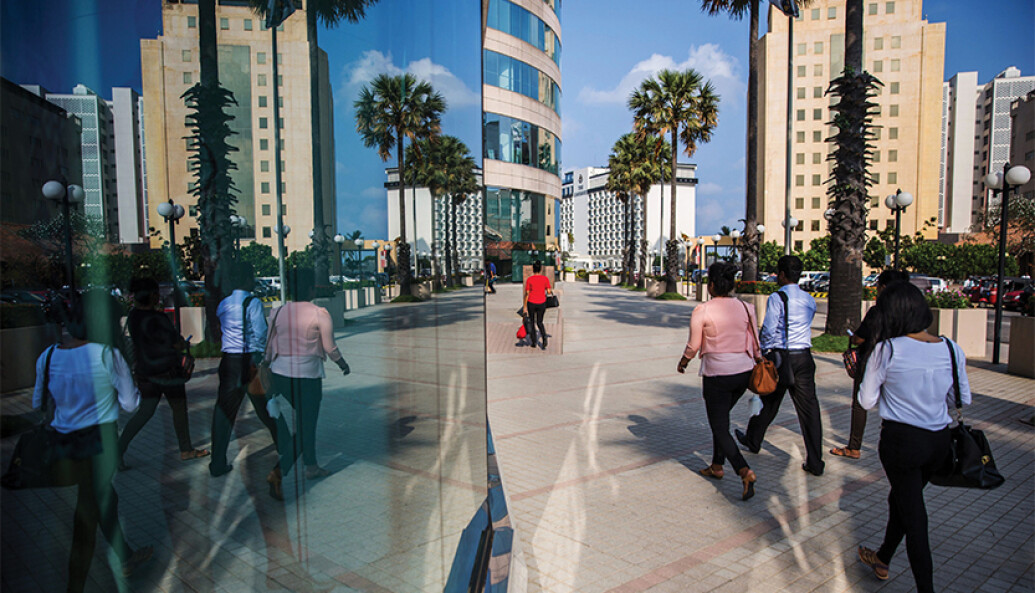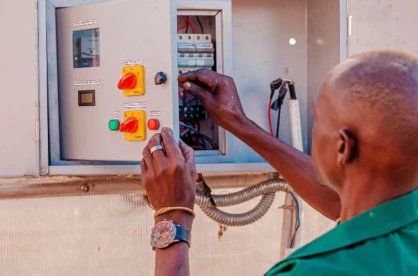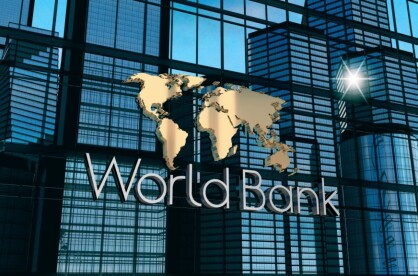Commitments Made – Time Running Out
In 2015, Sri Lanka, alongside 192 UN member states, pledged to the 2030 Agenda for Sustainable Development, committing to deliver on all 17 Sustainable Development Goals (SDGs). In 2016, the country signed and ratified the Paris Agreement, promising to cut greenhouse gas emissions, expand renewable energy, and restore forest cover.
Now, with less than 4.5 years left, Sri Lanka stands at a crossroads. The country is under pressure from a debt burden exceeding USD 83 billion, reliance on an IMF bailout, and a food crisis where one in three citizens is undernourished (World Bank, 2024).
The issue is no longer if Sri Lanka should act, but how urgently and decisively it can deliver on its promises amid overlapping economic, social, and environmental constraints.
Now, with less than 4.5 years left, Sri Lanka stands at a crossroads. The country is under pressure from a debt burden exceeding USD 83 billion, reliance on an IMF bailout, and a food crisis where one in three citizens is undernourished (World Bank, 2024).
SDG and Paris Agreement Commitments: Ambition vs. Reality
Sri Lanka’s 2021 Nationally Determined Contributions (NDCs) align with SDG 7 (Affordable and Clean Energy), SDG 13 (Climate Action), and other goals tied to poverty, hunger, and health. Key commitments include:
- 14.5 percent GHG reduction by 2030 (4 percent unconditional, 10.5 percent conditional on international financing) (ADB, 2021).
- 70 percent renewable electricity by 2030, with no new coal plants.
- Carbon neutrality in electricity by 2050; nationwide neutrality by 2060.
- Forest cover expansion to 32 percent by 2030.
- 2,000 MW solar, 800 MW wind, 300 MW hydropower, plus biomass and waste-to-energy projects (Policy Asia-Pacific Energy, 2021).
But progress has slowed dramatically. The 2022 economic collapse, political instability, and fiscal austerity have sidelined sustainable development priorities (Daluwatta, 2025a; Daluwatta, 2025b).
By comparison, India has already surpassed 70 GW of installed solar capacity, and Bangladesh has become a global leader in community microgrids. These cases show that consistent policy and financing can deliver transformational outcomes—proof that Sri Lanka’s ambitions are realistic if urgency and execution are restored.
Current Status in 2025: Falling Behind
Energy sector
- Renewable energy contributed only ~48 percent of total generation in 2024, far short of the 70 percent 2030 target (Ceylon Electricity Board Annual Report, 2024).
- Expansion of solar and wind projects is stalled by financing bottlenecks and policy inconsistency (Daluwatta, 2025b; Daluwatta, 2025f).
- Battery storage and green hydrogen pilots are virtually absent, despite being critical for renewable integration and grid stability.
Food security and hunger
- Over 31 percent of households face food insecurity (World Bank, 2024).
- Agricultural productivity is declining, worsened by climate variability, threatening both rural livelihoods and urban food supply chains.
- Post-harvest losses remain as high as 30–40 percent for perishables due to a lack of cold storage and agro-processing facilities that could be powered by distributed solar.
Fiscal and Debt Constraints
- Sri Lanka remains under a USD 2.9 billion IMF Extended Fund Facility (2023–2027), with strict conditionalities on energy pricing, subsidy cuts, and fiscal tightening (IMF, 2024).
- Over 70 percent of government revenue goes to debt servicing, leaving little fiscal space for SDG-aligned investment.
- Nations such as Ecuador and Belize have successfully negotiated climate-debt swaps, freeing billions for conservation and clean energy. Sri Lanka has yet to seriously pursue such instruments at scale.
Paris mandate and NDC implementation
- Most conditional targets (10.5 percent emissions reduction) are at risk without large-scale international financing.
- Sri Lanka ranks in the bottom third of SDG indices in Asia, signalling urgent intervention (UNDP, 2024).
- Without progress, Sri Lankan exports could face EU Carbon Border Adjustment Mechanism (CBAM) tariffs, reducing competitiveness in apparel, tea, and rubber.
Challenges on the Road to 2030
Sri Lanka faces a complex web of debt, climate risks, and governance fragility:
Debt–SDG Trap
- Implementing SDGs demands significant investment in clean energy, agriculture, and health.
- Heavy debt servicing crowds out such investment. Climate–debt swaps and PPPs are critical (IMF, 2024).
- By 2030, the financing gap for SDG-aligned investments could exceed USD 20–25 billion unless international climate finance is unlocked.
Policy Fragmentation
- Delays in amending the Electricity Act, licensing uncertainty, and inconsistent incentives undermine investor confidence (Daluwatta, 2025e).
- This stop-start approach leaves projects announced but rarely delivered, eroding credibility in global markets.
Energy Mismanagement
- Fossil fuel imports cost nearly USD 6 billion in 2024, despite abundant solar and wind potential (Daluwatta, 2025b).
- Every dollar spent on imports is effectively an exported job opportunity that could have stayed within Sri Lanka’s clean energy economy.
Climate Vulnerability
- Rising seas, floods, and droughts already threaten agriculture and energy infrastructure (UNDP, 2024).
- Predicted rice yield losses could hit 30% by 2035 without intervention (FAO, 2025).
- Climate-induced migration could displace thousands from coastal and drought-prone zones by 2040, creating social and economic strains.
Governance Pressure
- Allegations of oversight failures and ministerial discretion in the energy sector place intense scrutiny on the NPP government (Daluwatta, 2025f; Daluwatta, 2025e).
- Transparent governance is not only a domestic demand but also a precondition for concessional climate finance from international partners.
Creating Opportunities with Clean Tech, ESG, and SDG-Aligned Investment
Sri Lanka’s geography and resources give it a powerful opportunity to transform. Clean tech, agritech, and ESG-focused investments can drive growth while tackling debt and climate risks.
Renewable Energy Potential
- With 5–6 kWh/m² daily solar radiation, Sri Lanka could generate over 10 GW of solar power, far exceeding demand (Daluwatta, 2025b).
- Offshore wind, biomass, and floating solar can stabilise the grid.
- AI-enabled microgrids can secure rural energy and power agro-processing hubs (Daluwatta, 2025c).
- Unlocking green hydrogen and large-scale battery storage could position Sri Lanka as a future clean energy exporter to South Asia.
Agrivoltaics
- Combining solar with crops boosts farmer income, reduces water use, and enhances food security (Daluwatta, 2025c; Fraunhofer ISE, 2023; Chiba University, 2023).
- Farmers must retain at least 20 percent equity to prevent land conflicts and align incentives (Chile model; Daluwatta, 2025c).
- Agrivoltaics paired with solar-powered drip irrigation and AI-based crop monitoring can create resilient, climate-smart farming.
AI Microgrids
- Linking agricultural hubs with AI-controlled microgrids ensures reliable energy and predictive maintenance (Daluwatta, 2025d).
- Reducing outages could save the economy hundreds of millions annually in lost productivity.
Job Creation
- · Scaling clean tech could create 200,000+ jobs by 2030, strengthening energy security and cutting fossil dependence.
- · Many of these jobs will be in rural and semi-urban areas, empowering women and youth, reducing migration pressures, and stimulating balanced regional growth.
ESG Imperative and SDG Alignment
ESG investments now exceed USD 30 trillion globally (UNEP FI, 2023). Sri Lanka must align with ESG and SDG principles to attract capital.
Key linkages include:
- SDG 7: Affordable and clean energy.
- SDG 2: Zero hunger through sustainable farming.
- SDG 13: Climate action and resilience.
Proper ESG alignment improves creditworthiness, lowers borrowing costs, and signals compliance with Paris. Failure risks cascading crises across energy, food, and climate (Daluwatta, 2025d).
Moreover, ESG alignment is becoming a trade requirement. Export markets increasingly demand emissions disclosure and climate compliance. Sri Lanka risks being excluded from global value chains without rapid progress.
Actionable Roadmap
To meet SDG and Paris targets by 2030, Sri Lanka must act decisively:
- Accelerate Renewable Energy Deployment
Fast-track 2,000 MW solar via PPPs.
Mobilize green and sustainability-linked bonds.
Remove barriers to renewable imports (Daluwatta, 2025b).
Develop pilots for green hydrogen and battery storage.
- Climate-Resilient Agriculture & Food Security
Launch 100 MW agrivoltaic pilots in high-value crop zones (Daluwatta, 2025c).
Use AI-optimized irrigation to cut water use by 45% (Netafim, 2022).
Expand solar-powered cold storage and agro-processing to reduce post-harvest losses.
Partner with FAO and World Bank for nutrition programs.
- Forest & Biodiversity Restoration
Develop corporate carbon offset programs.
Incentivize community forestry participation.
Target degraded lands for reforestation and biodiversity corridors.
Pursue climate–debt swaps modeled on Ecuador and Belize.
Ensure national budgeting aligns with SDG tagging.
Engage the diaspora in sustainability-linked investment funds.
Establish a National SDG & Paris Compliance Council with civil oversight.
Publish annual SDG-Paris scorecards.
Mandate public reporting of emissions and ESG compliance for major companies.
- Infrastructure Modernization
Upgrade the grid for decentralized renewables and hydrogen storage.
Deploy AI for predictive maintenance.
Explore cross-border energy trade with India and regional integration.
Support EV charging infrastructure powered by renewables.
- Workforce & Community Engagement
Create Centers of Excellence for renewable energy and agrivoltaics.
Train Agro-Energy Technicians and women-led solar cooperatives.
Ensure rural community participation for ownership and acceptance.







